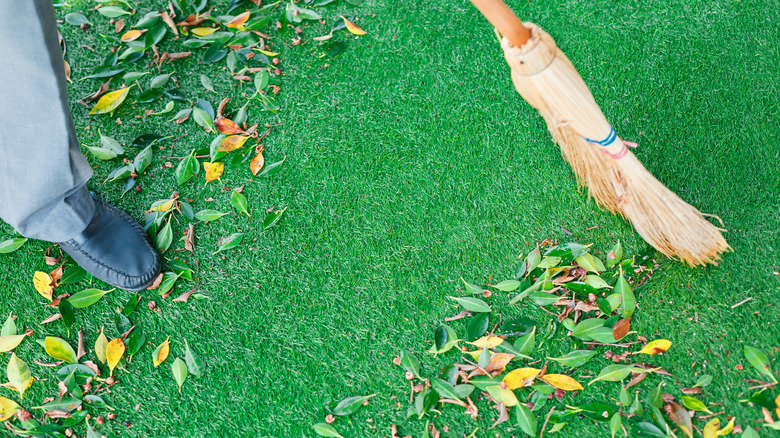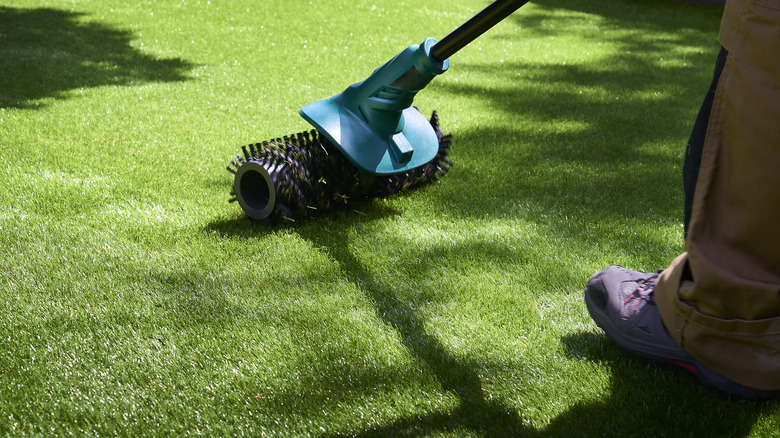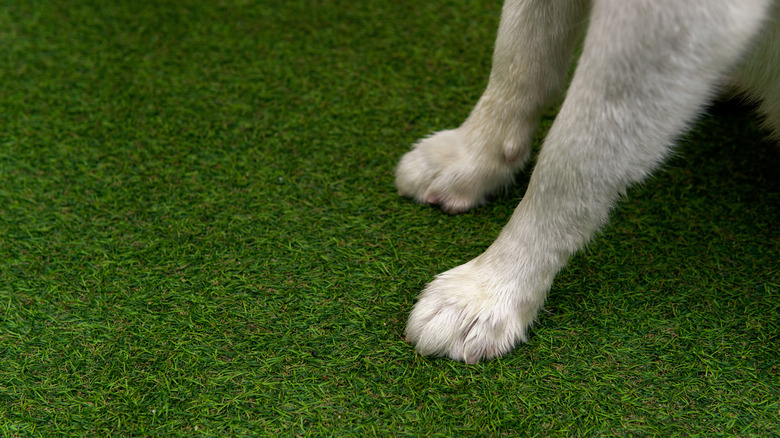How Do You Clean Artificial Grass?
Did you know that artificial grass can last up to 20 years if properly taken care of? While it may not require mowing, watering, or even sunlight to keep it looking fresh, cleaning artificial grass is vital to its longevity and overall aesthetic appeal. The last thing anybody wants for their luscious immortal lawn is a mess of debris, spills, stains, pet waste, and an odor rising up from the ground.
Thankfully, this is all preventable. How often you need to clean is dependent on what kind of life and activity is around your lawn. But the first line of defense in your artificial grass maintenance routine should be regular debris removal. Be it fallen leaves, twigs, or any other organic matter, it's essential to keep your synthetic turf free from clutter. You can use a leaf blower, plastic rake, or a soft broom for this task. Frequent cleaning of debris not only preserves the appearance of your lawn but also prevents any potential buildup of organic matter that could lead to weed growth. Afterward, you should give your turf a gentle wash. Let's dive deeper and learn more about what important steps you should be aware of when cleaning your artificial grass.
Brush, rinse, and repeat
For starters, you probably want to get into the art of brushing. Brushing your artificial grass is the equivalent of running a comb through your hair — it untangles the blades, helps them stand upright, and maintains their natural look. We recommend using a brush with synthetic bristles (never metal) to avoid damaging the turf. Ideally, you should brush your turf once a week, but even monthly brushing can have a noticeable impact on minimizing wear and tear and fixing up any matted areas.
Once you've removed all debris, it's time to give the lawn a good routine rinse. Think of this like a low-power wash (too much pressure may damage your grass). Spraying your artificial grass with a garden hose once a week is a crucial maintenance task for your lawn as it washes away dust, pollen, and any other small leftover debris. By rinsing, you not only clean the turf but also help keep the grass blades upright, enhancing the overall visual appeal of your lawn.
Mind you, certain spills or stains cannot be so easily rinsed away with water. In that case, use a mild soap and warm water mixture or a vinegar and water solution on the target area and rinse thoroughly. Note that the sooner you act on the spill or stain the better.
Cleaning tips for alternative situations
In addition to the regular maintenance mentioned above, pet owners will need to be especially vigilant. Solid waste should be picked up regularly, and the area should be rinsed to prevent odors. For stubborn smells, consider using artificial grass cleaning products like a turf deodorizer or a homemade solution of equal parts vinegar and water. For those pet owners looking to install synthetic turf, be sure there is adequate drainage and an anti-microbial infill to help prevent any unwanted odors.
And then there is gum. Before you open up an investigation within the community, take a deep breath. First, you'll want to grab a knife — hold on! Second, use that knife to gently scrape the residue off the grass. The correct way to do this is in an upward fashion, pushing the residue in the direction of the grass. Do not scrape across as it could damage your grass or sever it completely — obviously, not growing back.


